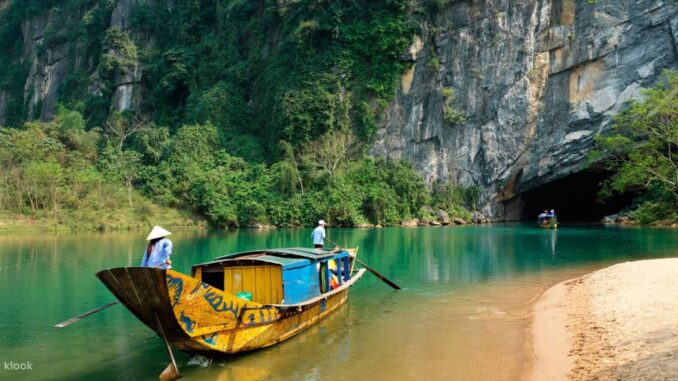
Famous as one of the world’s largest natural wonders in Vietnam today, it is located in Quang Binh province and is chosen by many tourists. This place not only contributes
greatly to preserving nature, flora, and fauna but also creates an impressive tourist destination for tourists right from the first visit. With magnificent landscape, biodiversity, and karst-specific geomorphology, Phong Nha – Ke Bang National Park offers an unforgettable experience for your trip to Quang Binh province. From exploring caves to jungle trekking, this site is a true natural wonder waiting to be discovered.
Location
Phong Nha – Ke Bang National Park is divided into 3 areas, which are 100,296 hectares of strictly protected area, 19,619 hectares of ecological restoration area, and 3,411 hectares of service subdivision.
Phong Nha – Ke Bang National Park has a cave system that is the oldest in Southeast Asia. There are two major cave systems: Phong Nha Cave and Vom Cave. Phong Nha Ke Bang National Park caves are so outstanding that they are often referred to as the “Kingdom of Caves.”
Origin of its name
The name “Ke Bang” refers to a bygone era when many villages were named using two descriptive words at the beginning, like “Ke” or “Co” (such as Ke Sot Village or Co Lac Village). Even though the villages no longer exist, the word was used to name this area.
The phrase “Phong Nha” is a very symbolic word. “Phong” is a Sino-Vietnamese word for “wind” and “Nha” is a Sino-Vietnamese word for “teeth”. Phong Nha itself evokes the image of the wind gently blowing through the gaps between the rocks.
In addition, “Phong Nha” is a nod to the famous Phong Nha Cave, which has been known since the French colonial period. By incorporating this well-known landmark into the name of the entire national park, the management board hopes to attract more visitors to explore its natural beauty and cultural heritage.
Why is it famous?
1. The longest wet cave
Vom Cave, the longest wet cave in the world, boasts an impressive 28 kilometers of underground exploration. Visitors will be left breathless as they navigate through this immense cave and marvel at the freshwater of the underground river. The vastness of Vom Cave is truly awe-inspiring and will leave a lasting impression on every visitor.
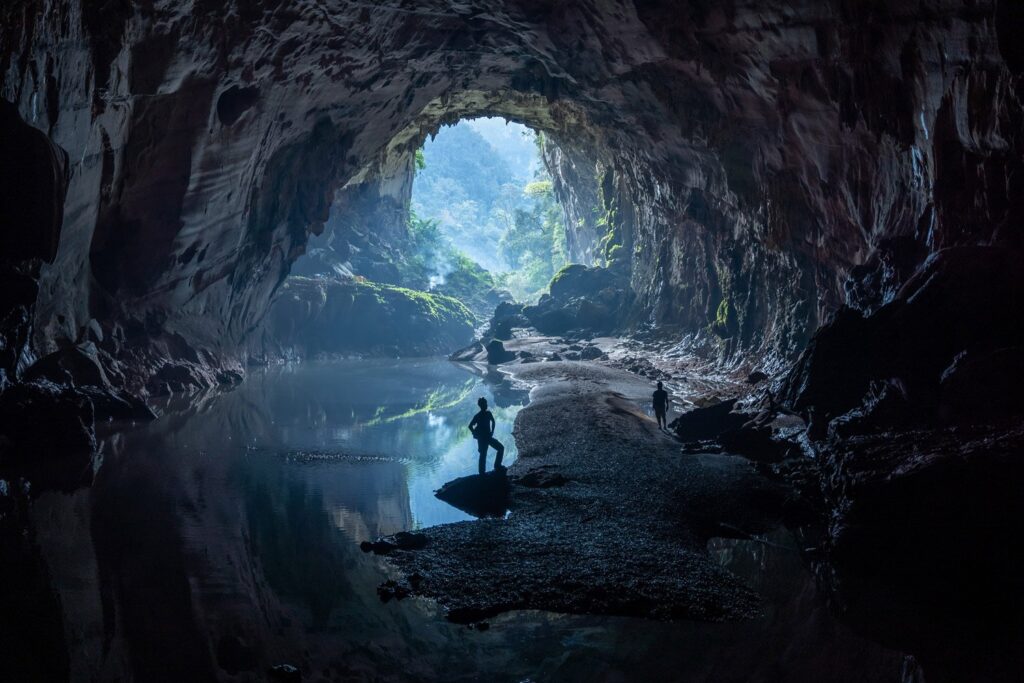
2. The highest and widest cave mouth
Visitors standing in front of Phong Nha Cave Mouth will be overwhelmed by its magnificence. The cave’s wide entrance lets the sunlight in, which creates a unique light contrast in different corners of the cave. The deeper visitors go into the cave, the darker it gets. As you row your boat in, you will feel like a tiny little man against the tremendous nature.
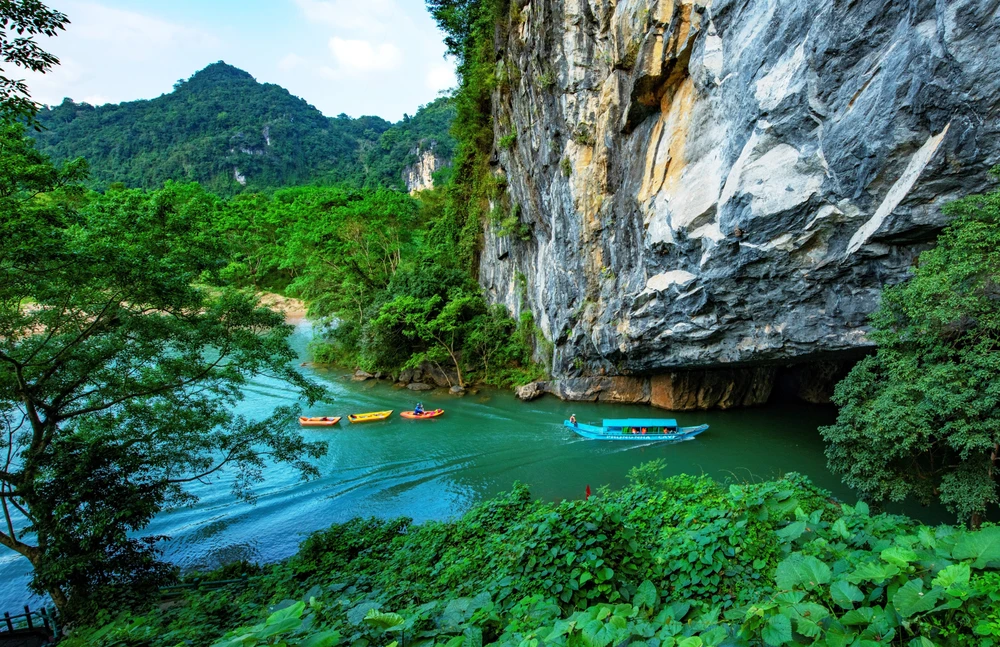
3. The widest and most beautiful sandy beach and reef
Throughout millions of years, natural processes and water erosion have formed a stunning submerged landscape inside Phong Nha – Ke Bang National Park in general and Phong Nha Cave in particular. Visitors will not believe their eyes when they see the natural reefs that have the shapes of animals, people, and even clouds. You will be amazed at this sophisticated handiwork of nature, carved out with such precision and beauty.
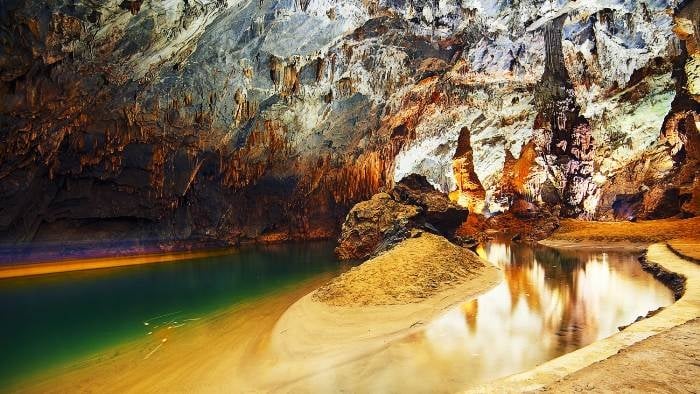
4. The most beautiful underground lake
Inside Phong Nha Cave, you will see a magical underwater lake, which is truly a sight to behold. The crystal-clear blue water reflects the light that penetrates through the cave’s ceiling, creating a fairy world for visitors to contemplate and immerse themselves in.
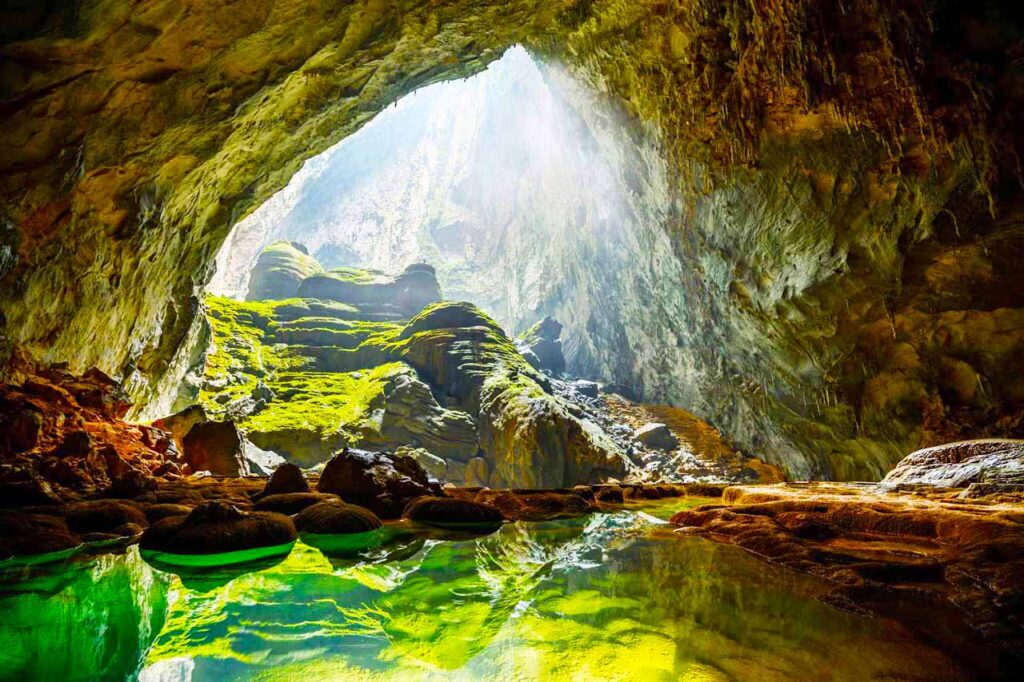
5. The most majestic system of stalactites
Another not-to-be-missed feature in Phong Nha Cave is the incredible stalactites. These massive stalagmites have impressive sizes and shapes and also come in a variety of beautiful colors. Once sunlight shines on them, you cannot help but feel entranced by the beauty of the cave.
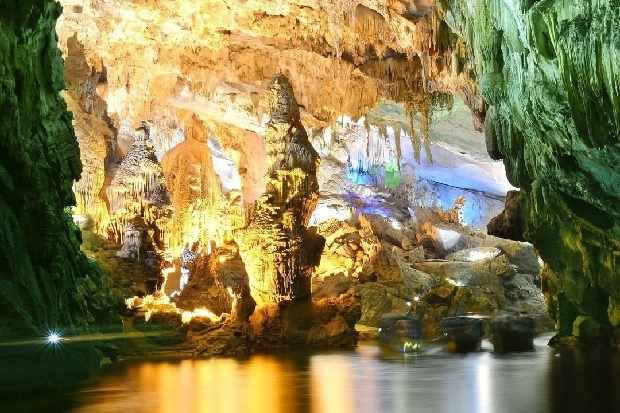
6. The longest underground river in Vietnam
In Phong Nha Cave, there is a subterranean river that stretches over an impressive 1,500 meters. The cool and clear water flows through rock formations, sculpting them into unique and stunning figures. It is hard to believe that such stunning works of art were created by nature. Tourists can experience the magic of this underground river by taking a boat ride or swimming.
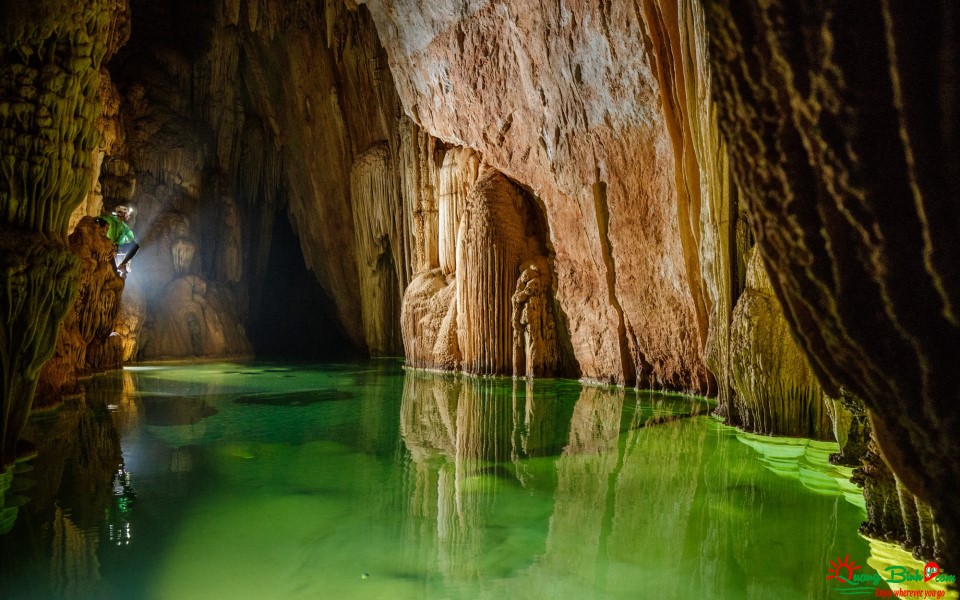
7. The widest and most beautiful dry cave
Thien Duong Cave in Quang Binh is the most beautiful dry cave in Vietnam. As you step inside, you will see wooden walkways thoughtfully designed for your easy exploration. The deeper you venture into the cave, the more you will be surprised by its natural beauty. The cave ceiling twists and turns like waves of water. Countless stalactites of varying shapes and sizes are illuminated with sparkling lights, creating a shimmering scenery.
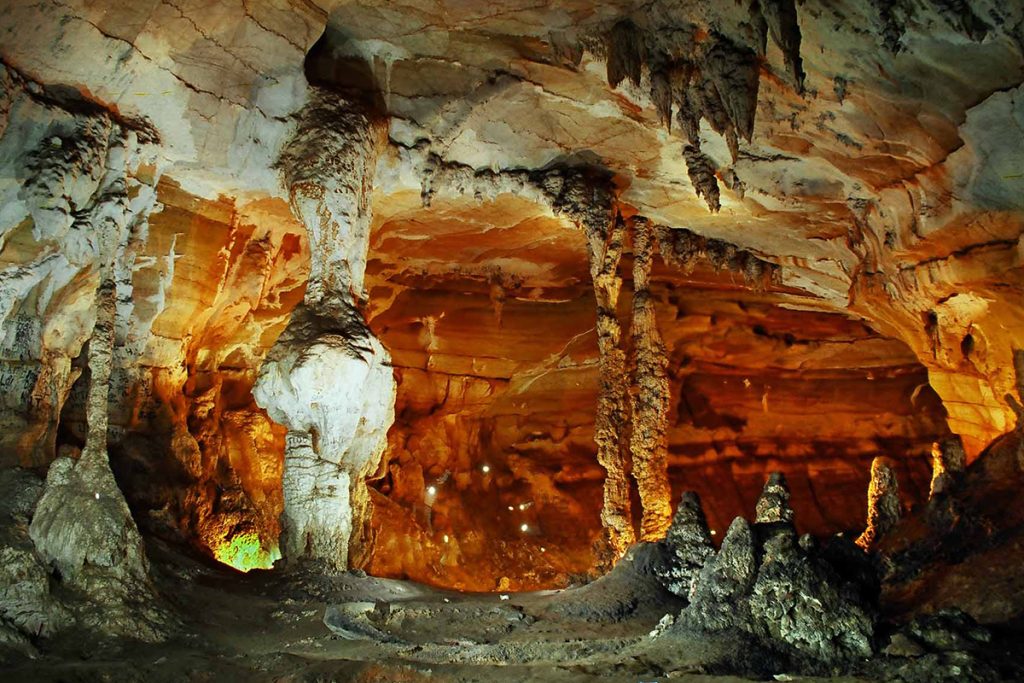
Introduce Son Doong Cave
Son Doong Cave is located in the core area of Phong Nha Ke Bang National Park. This cave was formed about 2-5 million years ago when river water flowed through limestone that was buried along a fault line. The water eroded and created a giant underground tunnel under the mountains. In places where the rock is soft, the ceiling collapses to form sinkholes, which over time form giant cave domes.
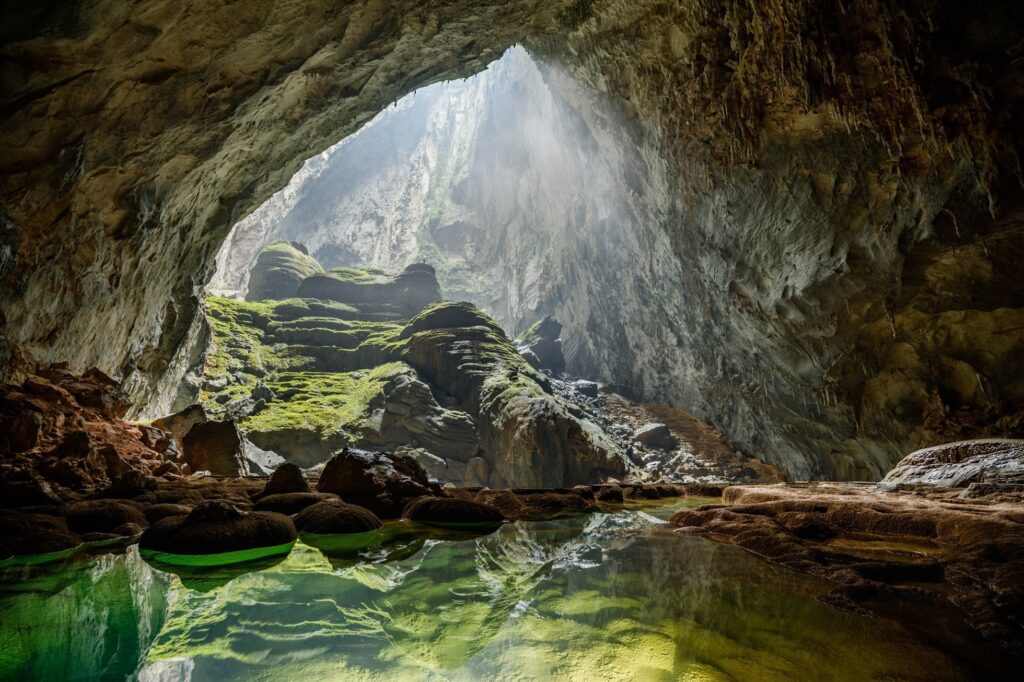
Discovery process
Son Doong Cave was first discovered by a jungler named Ho Khanh living in Phong Nha Ke Bang locality. In 1990 – 1991, during a trip to the forest, he encountered a sudden thunderstorm. While looking for shelter from the rain, he accidentally discovered a stone cave with large clouds above.
In 2007, the British Royal Expedition conducted a new cave search in Phong Nha – Ke Bang. Ho Khanh also took them to search for Son Doong cave for 2 days but could not find the cave. During that trip, Mr. Howard Limbert himself, while observing natural phenomena in the surrounding area, confirmed to Mr. Khanh that there must be a large cave nearby.
However, time did not allow, so the cave expedition had to return to England. But before returning to England, Mr. Howard Limbert promptly asked Ho Khanh to try to find that cave.
After that, Ho Khanh continued to go into the forest and found Son Doong Cave in 2008. In early 2009, when the British Caving Association expedition returned to Vietnam, Ho Khanh led Howard Limbert’s group, and this cave was named Hang Son Doong.
Recognition
After carefully surveying the cave, a group of cave experts from Hoang Gia Anh and Quang Binh Province introduced Son Doong Cave to the world. Subsequent technical announcements about the world’s largest cave, its size, and the unique ecosystem of Son Doong Cave have surprised the whole world. Son Doong is the largest cave on the planet and the most majestic cave in Vietnam.
Son Doong Cave has been in operation for adventure tourism since 2013. Son Doong cave adventure tourism activities always prove attractive to the domestic and international tourism community with their majestic beauty and many other great values.
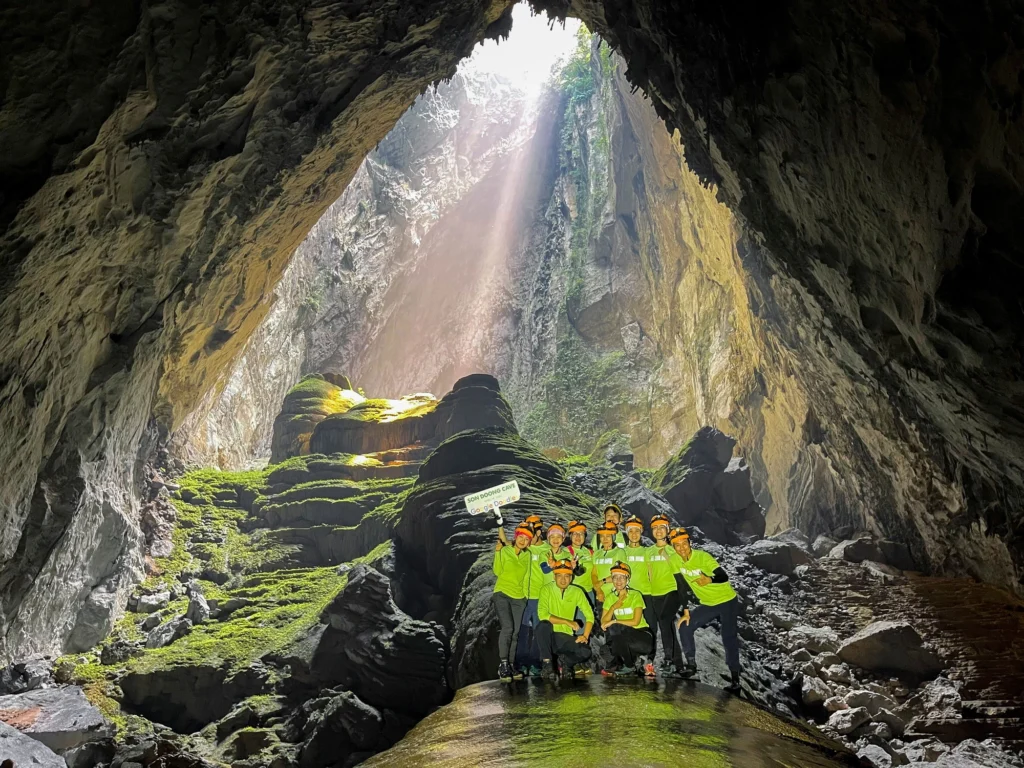
Conclusion
In 2002, UNESCO recognized Phong Nha – Ke Bang National Park (Phong Nha – Ke Bang National Park) as a World Natural Heritage according to geological and geomorphological criteria, and on July 3, 2015, it continued to be recognized by UNESCO. Recognized for the second time as a World Natural Heritage based on biodiversity criteria.
Phong Nha Kep Bang National Park is a great pride of Vietnam. With UNESCO’s recognition, the national park will be preserved and exploited properly to ensure that the ecosystem here is lush and developed.
Get an opportunity to visit World Heritage Sites in Vietnam through Vietnam E-Visa!